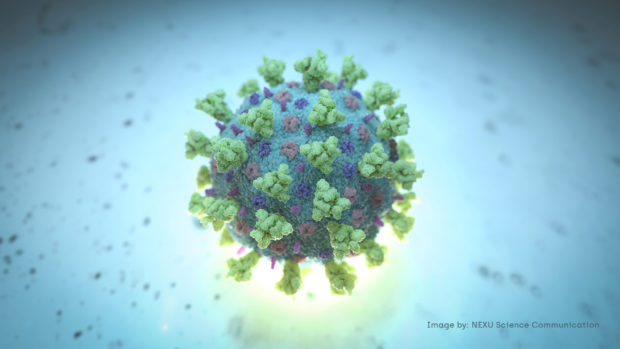MANILA, Philippines — The Department of Health (DOH) has noted a slight decrease in the national growth rate of Covid-19 cases, but it also observed a continuous increase in cases of infection in four regions — Cagayan Valley, Central Visayas, Soccsksargen and Caraga.
According to Dr. Alethea de Guzman, medical specialist at the DOH Epidemiology Bureau, the national growth rate has decreased to a negative six percent from the past two weeks, compared to the 53 percent positive growth rate from three to four weeks ago.
“After analysis of our data, one of the things we saw is that our national growth rate is showing signs of decrease, meaning ang narereport pong kaso (the reported cases) nationally in the past two weeks have slowed down,” she said in an online media forum on Thursday.
“But despite this slight downward trend, it does not mean that we can be complacent or lax in our implementation of strategies,” she added.
Except for Cagayan Valley, Central Visayas, Soccsksargen and Caraga, de Guzman said “a plateau or a downward trend were observed” for the rest of the regions in the country.
She noted that even though Covid-19 cases are increasing in some regions, the increase in these areas is now happening at a slower rate.
For Cagayan Valley, Covid-19 cases have increased specifically in Cagayan province, Isabela, and Santiago City, according to de Guzman. Meanwhile, cases in Nueva Vizcaya have plateaued, Quirino saw a slight increase of cases in the past but is now seeing a downward trend, and Batanes has not recorded a new case of Covid-19 in the past 28 days.
For Central Visayas, the increase in cases is happening in the cities of Cebu, Lapu-Lapu and Mandaue, according to the health official.
The DOH is also monitoring the increase of cases in Agusan Del Norte and Dinagat Islands in Caraga. De Guzman said Butuan is likewise showing an upward trend in the number of cases but the increase is not as significant as the two other areas.
As for Soccsksargen, she said the trend of Covid-19 cases is somehow “erratic,” with infections reaching a plateau, then decreasing, and now increasing again.
“We are looking at these four regions. If we compare it to other regions ang kanila ay medyo nagpa-plateau na like NCR (National Capital Region), where we saw na bumaba siya tapos nagpa-plateau na, or di kaya tulad ng Davao na though nag-increase siya noong December bumababa na siya ulit,” de Guzman added.
“After analysis of our data, one of the things we saw is that our national growth rate is showing signs of decrease, meaning ang narereport pong kaso (the reported cases) nationally in the past two weeks have slowed down,” she said in an online media forum on Thursday.
“But despite this slight downward trend, it does not mean that we can be complacent or lax in our implementation of strategies,” she added.
Except for Cagayan Valley, Central Visayas, Soccsksargen and Caraga, de Guzman said “a plateau or a downward trend were observed” for the rest of the regions in the country.
She noted that even though Covid-19 cases are increasing in some regions, the increase in these areas is now happening at a slower rate.
For Cagayan Valley, Covid-19 cases have increased specifically in Cagayan province, Isabela, and Santiago City, according to de Guzman. Meanwhile, cases in Nueva Vizcaya have plateaued, Quirino saw a slight increase of cases in the past but is now seeing a downward trend, and Batanes has not recorded a new case of Covid-19 in the past 28 days.
For Central Visayas, the increase in cases is happening in the cities of Cebu, Lapu-Lapu and Mandaue, according to the health official.
The DOH is also monitoring the increase of cases in Agusan Del Norte and Dinagat Islands in Caraga. De Guzman said Butuan is likewise showing an upward trend in the number of cases but the increase is not as significant as the two other areas.
As for Soccsksargen, she said the trend of Covid-19 cases is somehow “erratic,” with infections reaching a plateau, then decreasing, and now increasing again.
“We are looking at these four regions. If we compare it to other regions ang kanila ay medyo nagpa-plateau na like NCR (National Capital Region), where we saw na bumaba siya tapos nagpa-plateau na, or di kaya tulad ng Davao na though nag-increase siya noong December bumababa na siya ulit,” de Guzman added.
(We are looking at these four regions. If we compare it to other areas, we will see that the curve in other regions is reaching a plateau like in NCR, and in Davao where the cases are decreasing now despite increasing back in December.)
According to de Guzman, the increase in cases in some regions is linked to the increased mobility and gatherings during the holidays.
But despite recording an increase in cases in some areas, the healthcare utilization rate for all regions is at the safe zone, said de Guzman. She added that Davao Region posted the highest healthcare utilization rate but is still at low risk classification.
The country has so far logged a total of 541,560 Covid-19 cases, with additional 1,345 cases reported on Wednesday. Of the total count, 30,188 are active cases, 499,971 are recoveries, and 11,401 are deaths.
EDV
For more news about the novel coronavirus click here.
What you need to know about Coronavirus.
For more information on COVID-19, call the DOH Hotline: (02) 86517800 local 1149/1150.
The Inquirer Foundation supports our healthcare frontliners and is still accepting cash donations to be deposited at Banco de Oro (BDO) current account #007960018860 or donate through PayMaya using this link .
